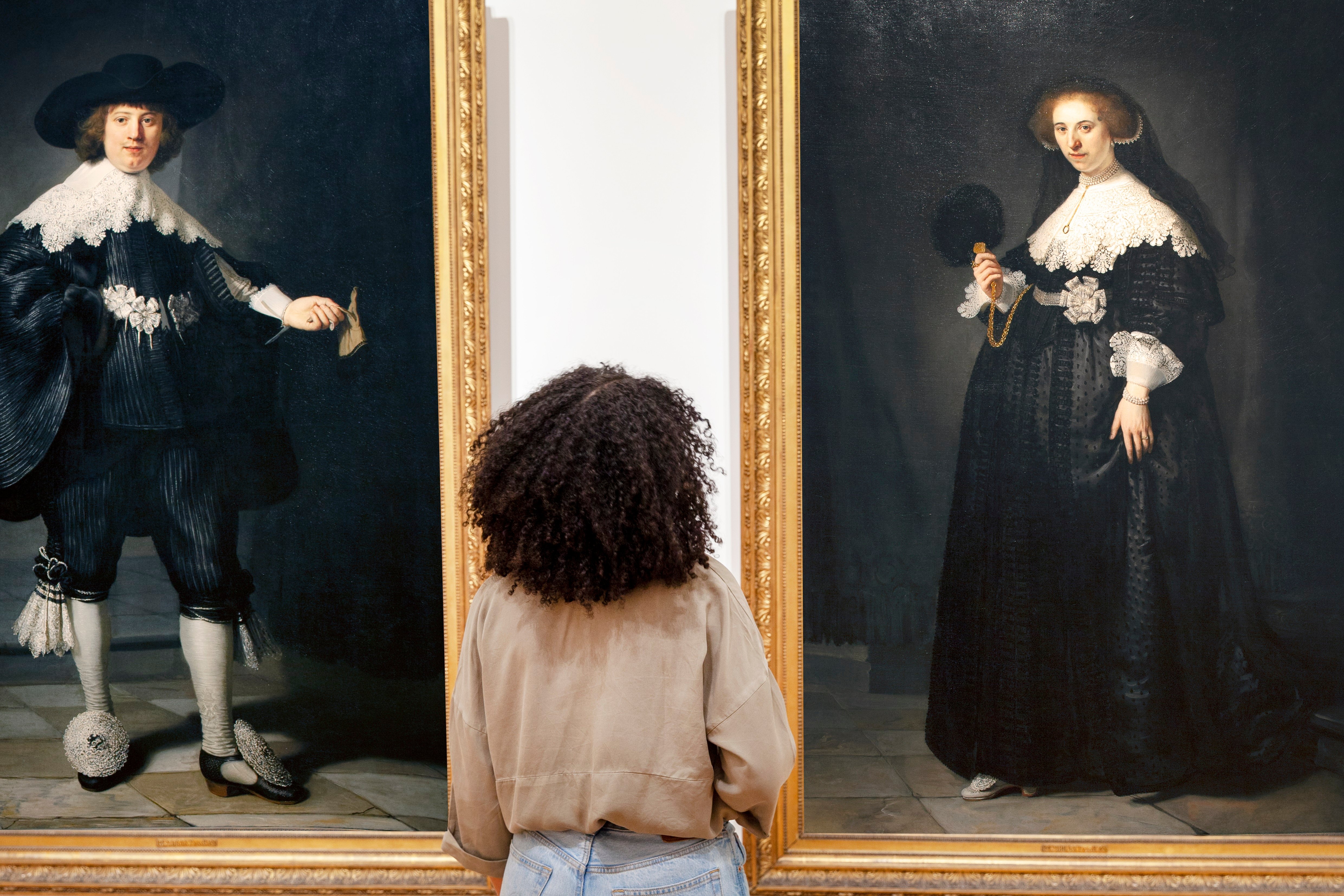
The Rijksmuseum in Amsterdam has unveiled its landmark exhibition, “Slavery” (through August 29), an unprecedented survey of 10 personal stories of those who were involved in the slave trade, either as profiteers or victims, as it made its way across the Atlantic and Indian Oceans and into the Netherlands’ various colonies.
The show, which has been four years in the making, includes 140 objects from the 17th through 19th centuries, and includes two towering Rembrandt portraits of Oopjen Coppit and Marten Soolmans, who were the ultra-wealthy beneficiaries of a sugar refinery, as well as disturbing artifacts such as collars that were forced on enslaved peoples and gifts exchanged between an African monarch and a slave trader.
Among the stories told is that of Wally, an enslaved man forced to work a sugar plantation in the colony of Suriname. Along with others, Wally organized a failed revolt on the plantation and fled, a crime for which he was executed by immolation in 1707.
In an audio presentation, his history is narrated by Surinamese-Dutch former kickboxing world champion Remy Bonjasky, whose ancestors worked on the same plantation. Wally’s “blood,” Bonjasky said in the recording, “has been passed down through generations, and is one of the reasons why I was able to become a kickboxing world champion three times.”
Valika Smeulders, the head of history at the Rijksmuseum said that, through such true-to-life storytelling, the show gives “insight into how individuals dealt with legalized injustice.”
Unknown, Multiple leg cuffs for chaining enslaved people, with 6 loose shackles, ca. 1600–1800. Amsterdam, Rijksmuseum, schenking van de heer J.W. de Keijzer, Gouda.
“By delving into [the history of slavery], we can form a more complete picture of our history and a better understanding of today’s society,” Rijksmuseum general director Taco Dibbits said in a statement, pointing out that these stories are integral to the Dutch past. The Dutch king Willem-Alexander of the Netherlands, whose descendants were profiteers of the trade, was given a first tour of the exhibition by Dibbits.
Dutch traders forcibly brought at least 600,000 Africans to North and South America. They also moved 1.1 million people across and through the Indian Ocean. Among the country’s former territories are Caribbean islands such as Aruba, Curaçao, and Saint Martin’s. One of the country’s largest colonies was modern-day Indonesia.
For now, before the show can be opened to the wider public, it will be accessible to student tour groups.
See images of the exhibition below.
Slavery exhibition, Photo: Rijksmuseum
Slavery exhibition, Photo: Rijksmuseum
Slavery exhibition, Photo: Rijksmuseum
Augustus van Bengalen Holding Hendrik Cloete’s Pipe (1788). Source: Anonymous. Courtesy Rijksmuseum.
Slavery exhibition, Photo: Rijksmuseum
Slavery exhibition, Photo: Rijksmuseum
Enslaved Men Digging Trenches (1850) Source: Rijksmuseum with support from the Johan Huizinga Fonds.
Slavery exhibition, Photo: Rijksmuseum
Slavery exhibition, Photo: Rijksmuseum